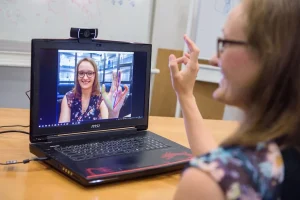If your growth strategy includes the Arabic-speaking market, you are evaluating one of the most concentrated opportunities in global expansion. The Arabic-speaking market spans high-spending Gulf economies, youthful North African populations, and fast-digitalizing Levant hubs. Most brands still underinvest in localized content, checkout, and support, which leaves the Arabic-speaking market underserved and open to first movers. Below is a practical look at why B2B leaders are prioritizing this region now, and how to operationalize entry with discipline.
Fast-growing e-commerce market
Across the region, shoppers moved online and stayed there. Multiple studies show that the share of people buying digitally is now mainstream, with weekly and even daily purchase behaviors rising since 2020. Payments are maturing, cash on delivery is receding, and digital wallets and cards dominate many categories. Logistics has caught up, with cross-border and domestic carriers improving delivery predictability and reverse logistics. For brands, this means funnel reliability is no longer the blocker it once was.
What still holds many teams back is front-end readiness. Arabic product pages, search optimized copy, localized size charts, bilingual customer care, and Arabic checkout reduce friction in category after category. Because Arabic content remains undersupplied relative to demand, companies that publish high-quality Arabic pages and maintain consistent promotion typically see faster organic lift than in saturated English markets. Treat this region as mobile first, optimize for short video and social commerce, and make returns and warranties crystal clear in Arabic.
Investments
Foreign direct investment into the region’s key markets has remained resilient and, in many cases, accelerated. Energy-rich countries took on the mega projects. Places with broader economies attracted fintech, ICT, and service players. It’s why Qatar, Morocco, Saudi Arabia, Egypt, and the UAE keep showing up on FDI shortlists with steady fundamentals and aggressive outreach. In parallel, national strategies have pushed next-generation infrastructure. Investment is piling into cloud, new data centers, logistics parks, and high-end manufacturing.
On the policy side, regulators are trialing rules for fintech, digital identity, and data moving across borders. For commercial teams, this investment climate translates into better partner ecosystems, enterprise-grade platforms, and more predictable compliance pathways. Go-to-market motions should assume stronger local procurement standards and proof points around data security, uptime, and audit readiness.
The demographic factors
The region’s biggest structural advantage is its age profile. Over half of the Middle East and North Africa is under 30, creating a deep pool of digital natives, university grads, and early-career talent. The result is rapid uptake of new apps and formats and a durable, skilled base for sales, support, and operations. It also sustains demand in education, mobility, gaming, and financial services. For recruiters, the mix of local talent and experienced expatriates supports quick ramp teams for shared service centers, creator programs, and regional hubs. Marketing should assume high social engagement and strong peer influence dynamics, especially in youth-heavy segments.
Technological demand
Mobile is the default, 5G coverage is expanding, and social video fuels discovery. The Gulf has near-universal internet use and some of the world’s highest social media penetration, while large markets like Egypt bring scale and rising adoption curves. This creates a reliable canvas for performance marketing, live shopping, and creator-led partnerships. It also brings higher expectations for speed, captions, and bilingual interaction. To convert this demand, upgrade the experience stack. Offer Arabic live chat, publish Arabic captions and subtitles for product videos and webinars, and include voice search, AR try-ons, and short explainers in your standard launch kit. On the enterprise side, regional buyers now expect strong uptime, secure collaboration, and data-residency options from SaaS vendors.
Government and private partnership
Policy has been a catalyst. Visa reforms, entrepreneurship programs, and SME development authorities have lowered barriers to entry in several markets. Long-term residence pathways for investors and entrepreneurs, simplified company formation in free zones, and government-backed accelerators signal continuing openness to foreign firms that invest and hire locally. In parallel, public procurement and mega projects anchor demand for infrastructure, construction, healthcare, education, and digital services. B2B sellers should align with national priorities, map procurement calendars, and prepare Arabic bid documentation with certified translations. Local partnerships, distributor diligence, and in-country support remain critical to sustaining awards beyond the first contract.
TransLinguist and how we can help
Launch faster in Arabic with a stack built for live events, content, and support.
Remote and onsite interpretation
Run board meetings, town halls, trainings, and conferences with professional simultaneous interpreters on TransLinguist Interactive, including integrations with major meeting platforms and broadcast workflows.
Live captions and subtitles
Add Arabic live captions for webinars and product demos, and publish post-event subtitles in more than fifty languages to lift watch through and accessibility.
Speech AI for real-time communication
Use Speech AI for real-time speech-to-speech support in multilingual team calls and customer escalations where fast understanding matters.
Translation and localization
Ship product pages, apps, knowledge bases, and legal documentation in Modern Standard Arabic and relevant dialects with human-in-the-loop QA and secure delivery.
Sign language services
Cover on-site and remote events with Arabic region sign language interpretation to meet inclusion and accessibility objectives.
Security and uptime
Operate under enterprise-grade controls. We support GDPR aligned practices, encryption, strict retention, and a high uptime SLA for mission-critical events and content delivery.
Conclusion
The opportunity in the Arabic-speaking market is not a slogan. It is a data-backed, execution ready path for companies that localize products, content, and support. Treat the Arabic-speaking market as a priority segment with its own funnel math, staffing plan, and vendor criteria. Start with a focused geography, stand up Arabic content and service lines, and use events and creator programs to build trust. When it’s time to roll, TransLinguist takes care of interpreting, captions, subtitles, and localization. Your crew stays focused on selling and serving. We’ll map the first launch together and set clear goals for acquisition, activation, and retention.
FAQs
How large is the Arabic-speaking audience I can realistically reach online?
Penetration is near universal in the Gulf and rising fast in North Africa and the Levant. For most categories, a focused two-country launch can cover millions of reachable users with strong purchasing power.
Do I need both Modern Standard Arabic and dialects?
Lead with Modern Standard Arabic for product, legal, and support content, then add dialectal voiceover, chat, and social creative where it lifts engagement.
What are the top friction points to fix first?
Arabic site search, Arabic checkout and returns, bilingual customer care, and Arabic captions on video. These deliver quick conversion wins.
What proves ROI to executives?
Track Arabic organic traffic growth, demo attendance, win rates in Arabic-speaking segments, support resolution time in Arabic, and repeat purchases from localized pages.



